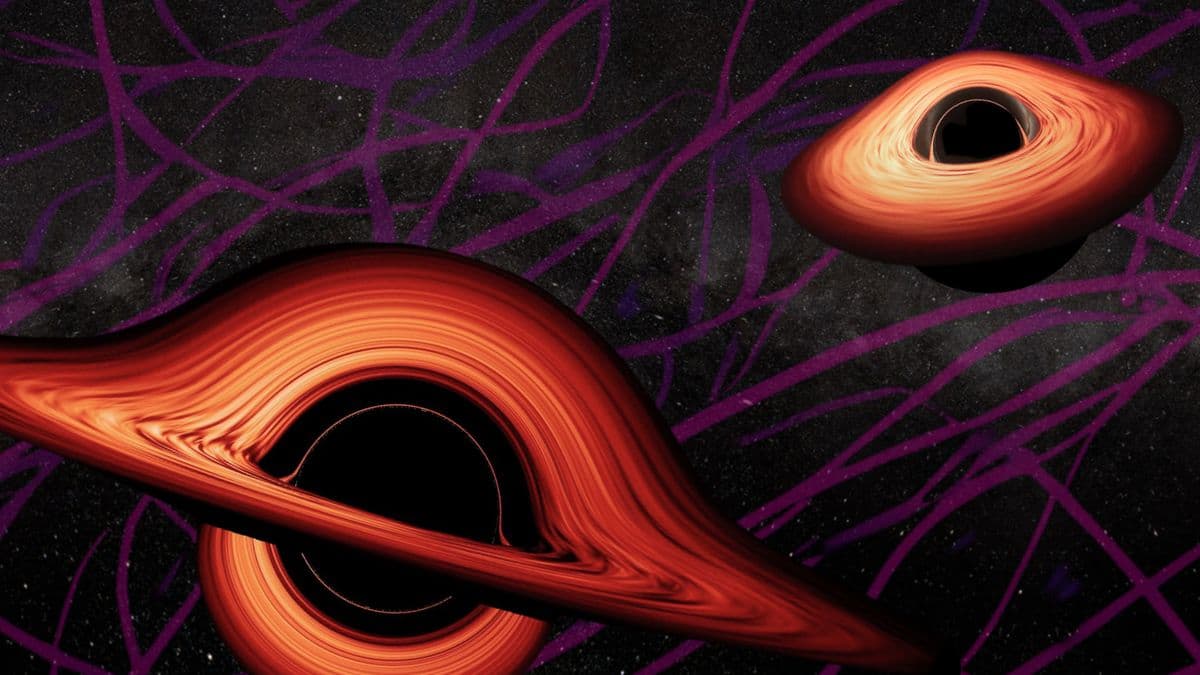
Dark matter may hold the key to black hole mergers
What's the story
Dark matter, the universe's most mysterious substance, may play a significant role in the merging of supermassive black holes, new research suggests. Astronomers have long known that when galaxies merge to form larger entities, their central supermassive black holes also converge and eventually combine. This process results in an even larger supermassive black hole and creates gravitational waves - ripples in the fabric of space and time.
Cosmic puzzle
The 'final parsec problem' in black hole mergers
Scientists have grappled with understanding how these cosmic giants cover the final 3.3 light-years (or one parsec) to initiate the merger process, a dilemma known as the "final parsec problem." According to research team leader Gonzalo Alonso-Alvarez from the University of Toronto, "The process by which supermassive black holes merge is complex because it relies on the black holes finding each other, forming a binary system, and then the orbital separation between them slowly decreasing."
Theoretical solution
Dark matter's influence on black hole mergers
Alonso-Alvarez further explained that when the separation between two black holes is around a parsec, it seemed that the merger would stall based on existing calculations. The research team proposes that dark matter, present at the center of galaxies, could significantly influence and facilitate these black hole mergers. This theory depends on dark matter self-interactions, where dark matter particles scatter off each other upon collision.
Cosmic composition
Dark matter's dominance in the universe
Dark matter does not interact with light or ordinary matter but does interact with gravity. It outweighs "everyday" matter particles in terms of mass by a ratio of between 5 to 1 and 6 to 1. This implies that all visible matter, including stars, planets, and moons, accounts for just 15% of mass in the cosmos.
Cosmic journey
The three-stage process of black hole mergers
When galaxies first merge, their respective supermassive black holes are far apart. They begin their journey toward the center of the merging galaxies through a three-stage process facilitated by the black holes's loss of energy. In the first stage, the black holes interact with stars and lose velocity, allowing them to gravitate toward each other. The third stage involves forming a binary system where the black holes generate gravitational waves and lose rotational kinetic energy, drawing them closer together.
Energy transition
Dark matter's role in the second stage of mergers
There is a gap in understanding what happens in stage two, between losing energy to stars and losing energy via gravitational waves. Alonso-Alvarez and his team suggest that dark matter might take over at this point and start stripping energy away through a process called "dynamical friction." "If black holes are moving in this dense 'dark matter fluid,' then they generate friction like an object moving through a viscous liquid," Alonso-Alvarez explained.
Cosmic calculations
Dark matter's interaction with supermassive black holes
The interaction between dark matter and supermassive black holes could also explain calculations about dark haloes around galaxies that can't be fully explained by "cold" models. These models suggest that dark matter is slow-moving and does not self-interact. If Alonso-Alvarez and his colleagues' theory is accurate, it may necessitate a move away from these cold models.